Object-oriented programming (OOP) is a way of structuring programs where we organize things into groups called “classes” and “objects“.
With this approach, we gather related functions and information together in organized and reusable units. This makes it easier to understand and work with the code.
A class serves as a template or blueprint for creating objects.
Classes define the properties and methods of an object, while objects are distinct instances of a class.
For example
In a game where you take care of pets, you’d have a “Pet” blueprint.
You could have a “Pet” class that specifies the attributes of each pet (such as “name” and “age”), as well as the actions they can perform (such as “speak” and “eat”).
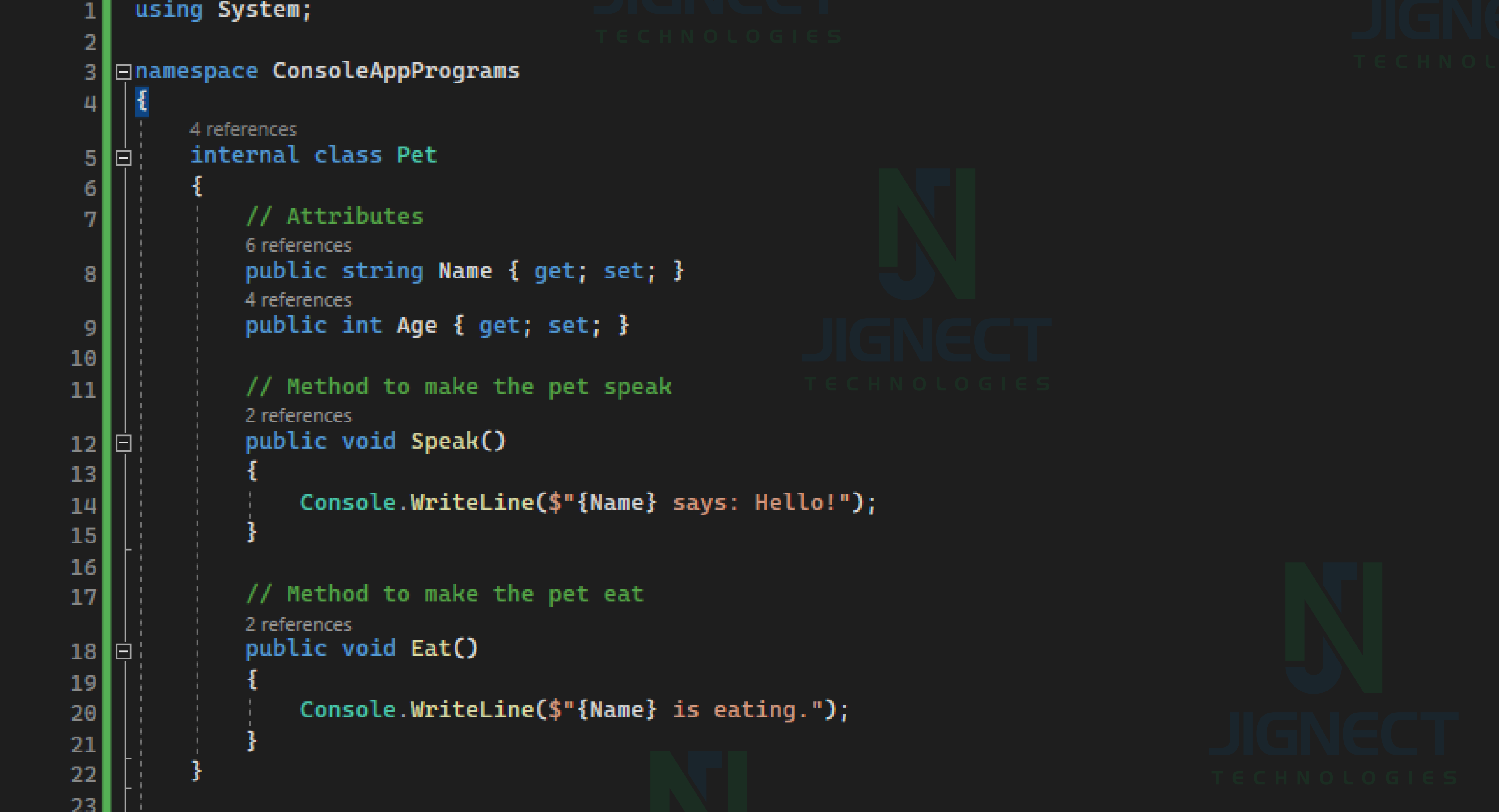
You can create objects or instances of this class for each specific pet. Each object can have its own values for each property.
For example
You might have a 2-year-old pet named “Reo” and a 1-year-old pet named “Raja”, both created using the “Pet” class.

➡️The Output:
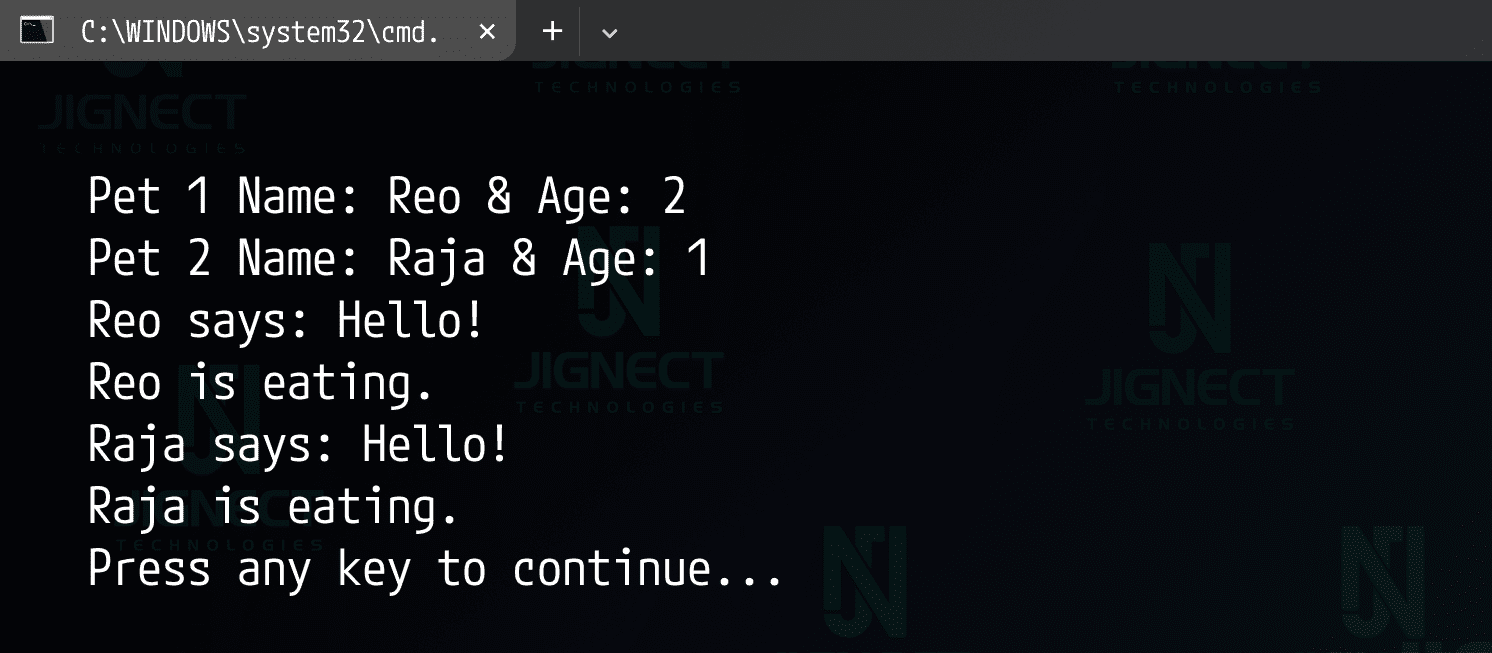
Principles of Object-Oriented Programming
Object-oriented programming has 4 main principles: encapsulation, inheritance, abstraction, and polymorphism.
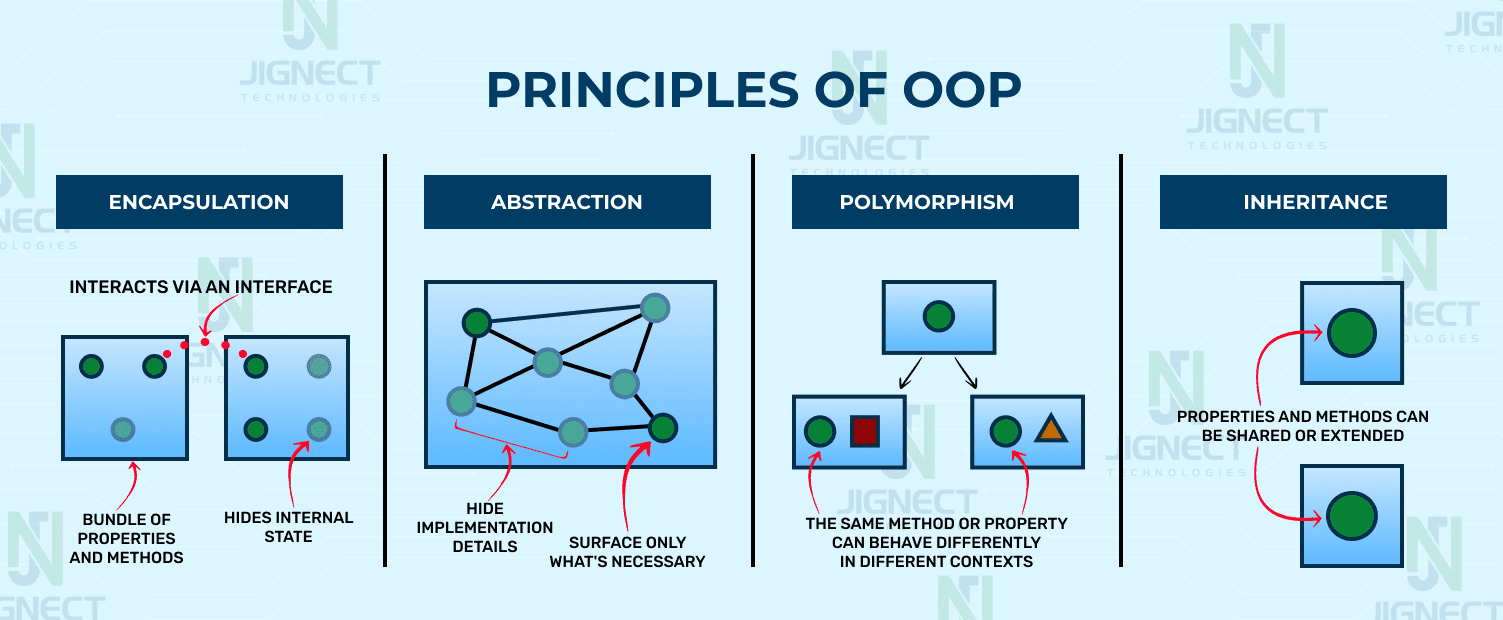
1️⃣ 𝐄𝐧𝐜𝐚𝐩𝐬𝐮𝐥𝐚𝐭𝐢𝐨𝐧
- Encapsulation encapsulates the data and methods within a class, preventing direct access from outside and ensuring that the data is accessed and modified only through defined methods. It provides data security and helps maintain code integrity.
- Example
- A player can view a pet’s age without accidentally changing it, but they can still utilize methods available on the public interface to change a pet’s name.
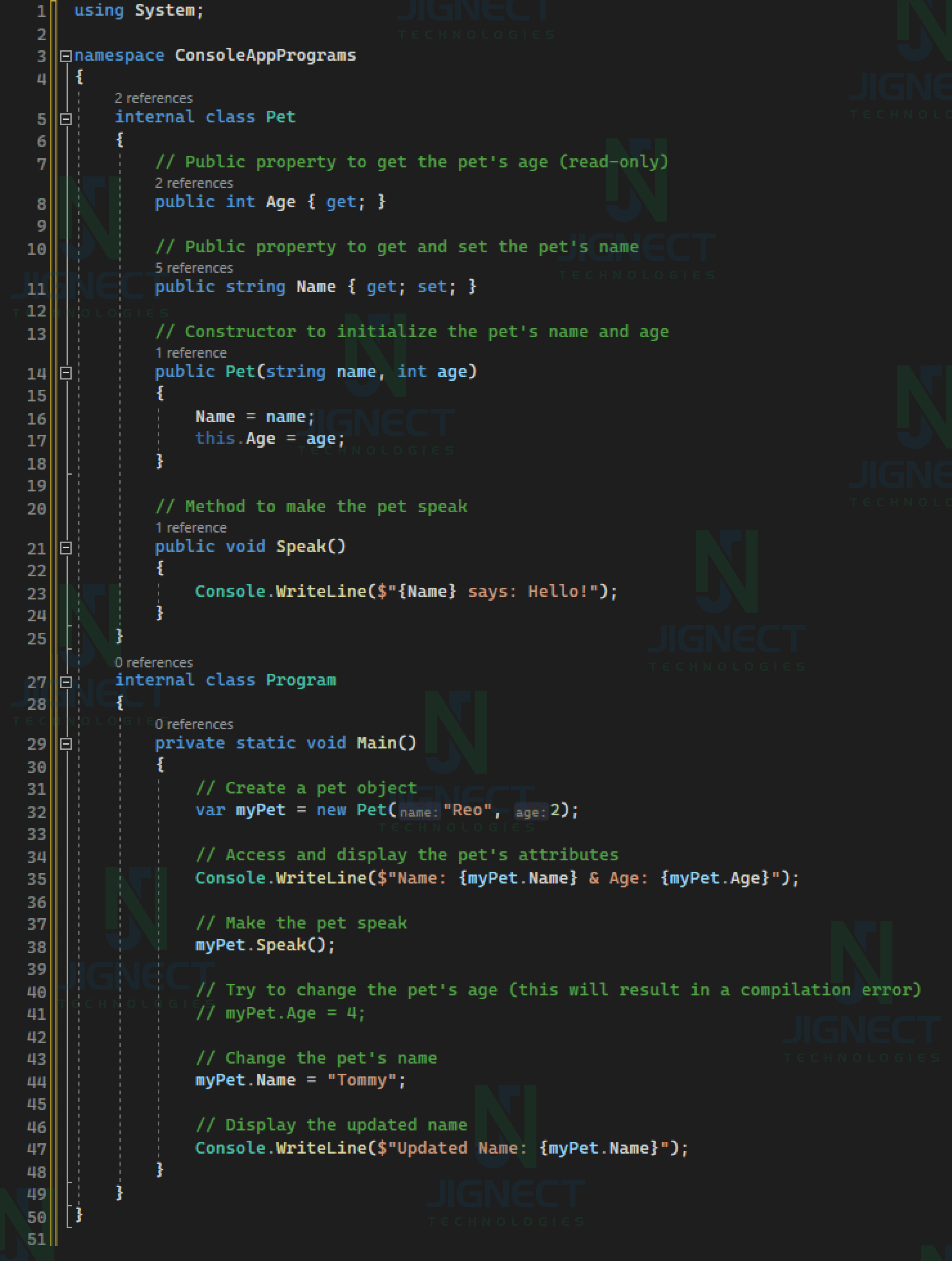
➡️The Output:
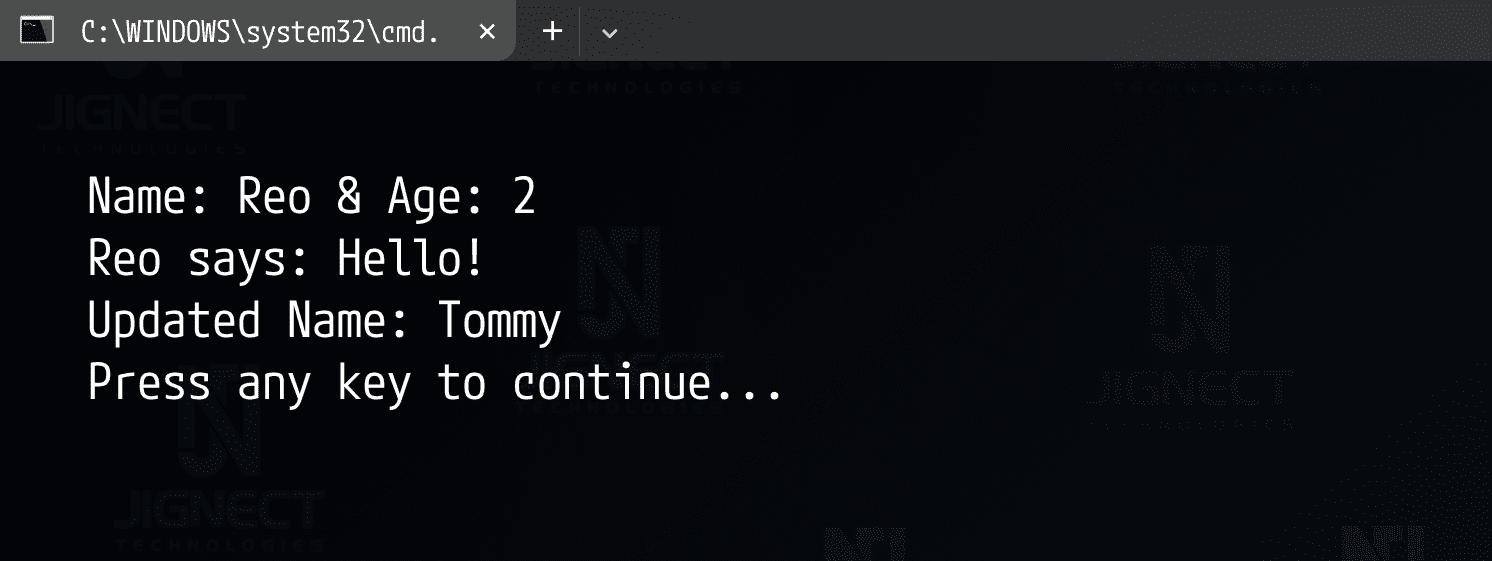
2️⃣ 𝐈𝐧𝐡𝐞𝐫𝐢𝐭𝐚𝐧𝐜𝐞
- Inheritance allows a class to inherit properties and methods from another class, promoting code reuse and creating a hierarchical relationship between classes.
- Example
- A “SuperPet” class that extends from “Pet” and inherits “age”, “name”, “eat”, and “speak”, while also defining new behavior like “fly”.
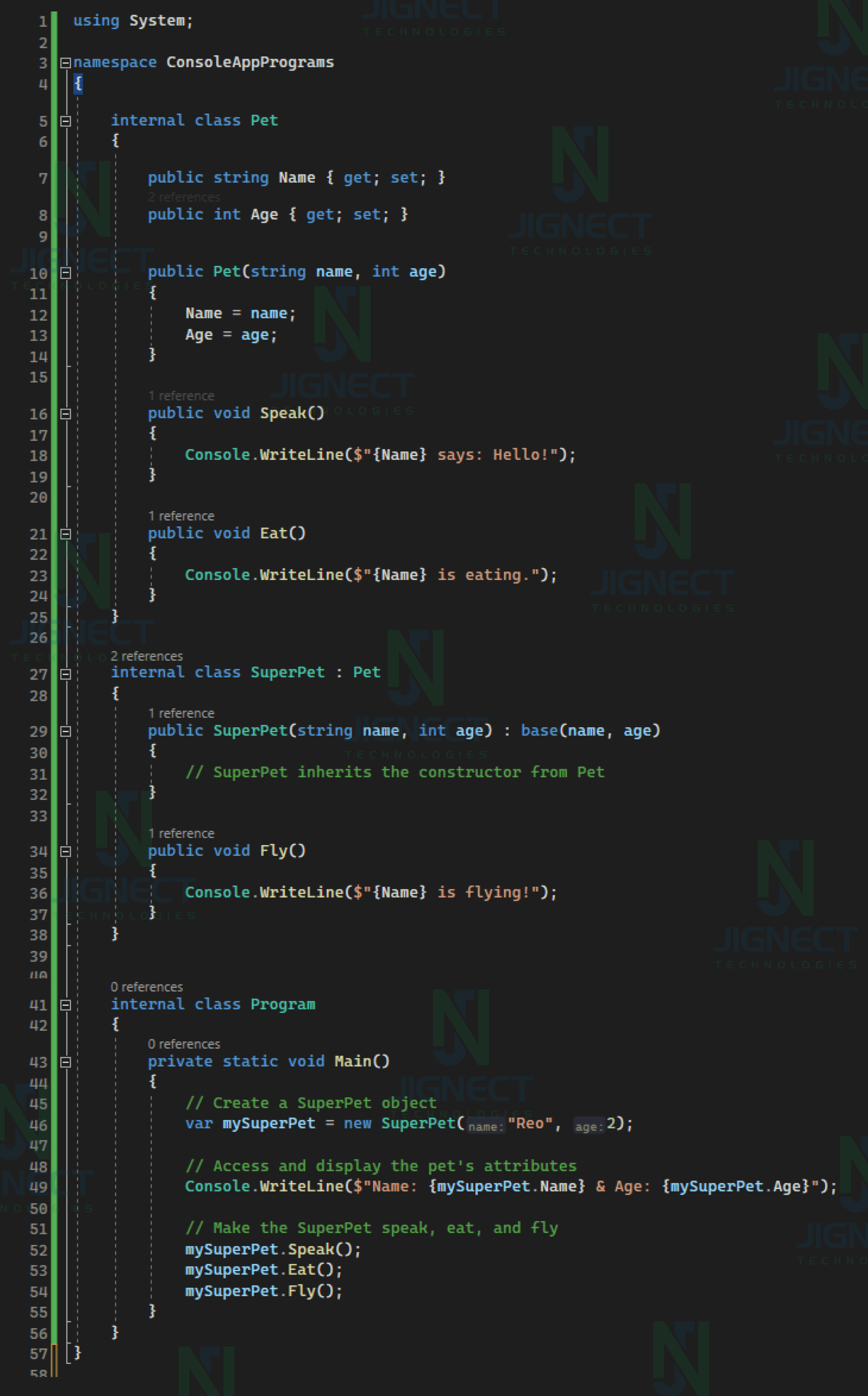
➡️ The Output:

3️⃣ Polymorphism
- Polymorphism is a principle that allows objects to alter their form by extending or overriding existing methods.
Polymorphism = Many Forms
- Example
- A “Dog” & “Cat” class that extends from the “Pet”, shouldn’t share the same “speak” method. You’d override it to have its own logic like “woof” or “meow”
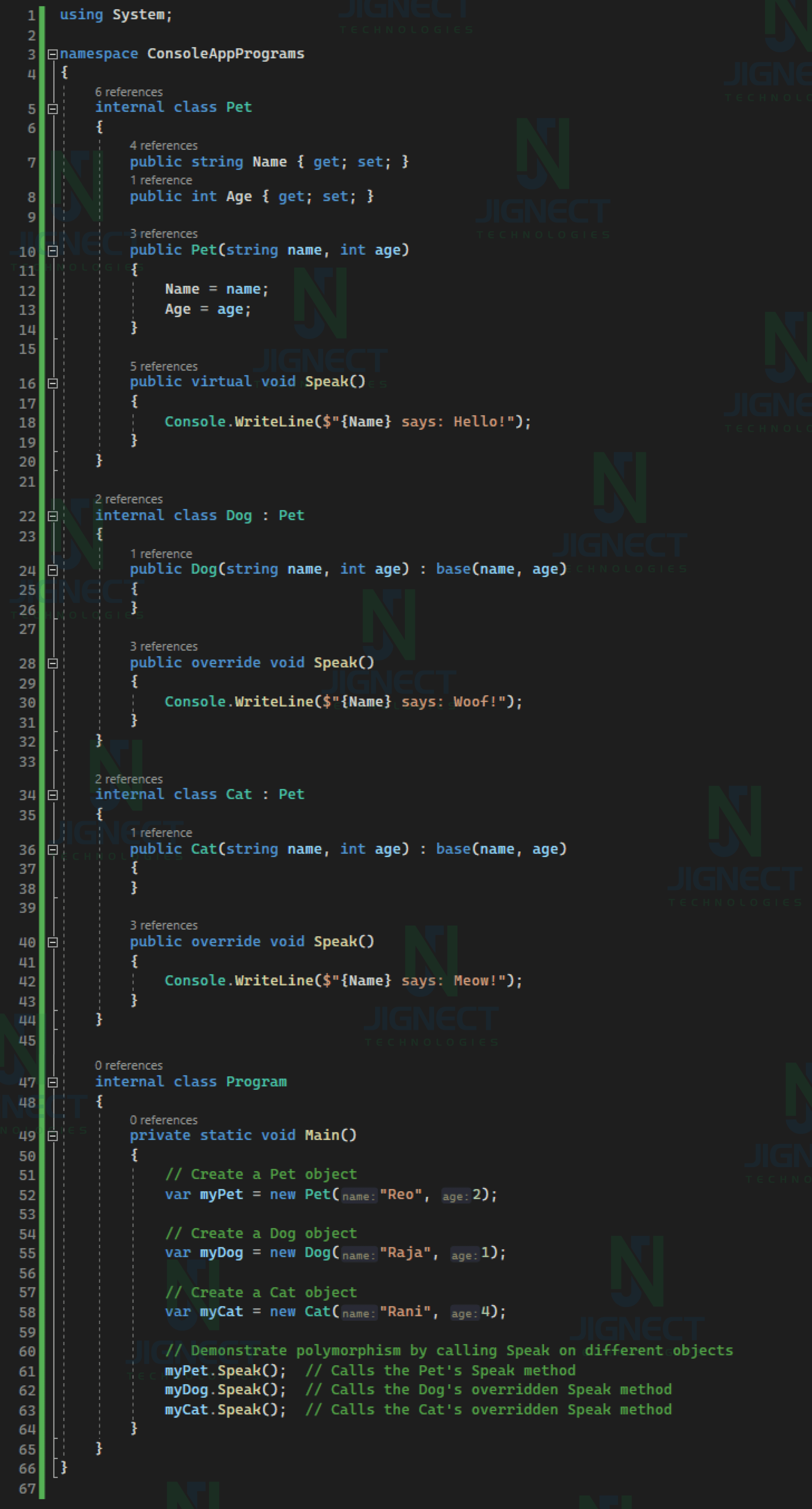
➡️ The Output:

4️⃣ Abstraction
- Abstraction focuses on hiding unnecessary details and only exposing the essential features of an object or system. It allows for easier understanding and maintenance of code.
- Example
- A “Player” class doesn’t need to know how the “eat” method works in the “Pet” class, it just needs to know how to interact with it — i.e. its input and output.
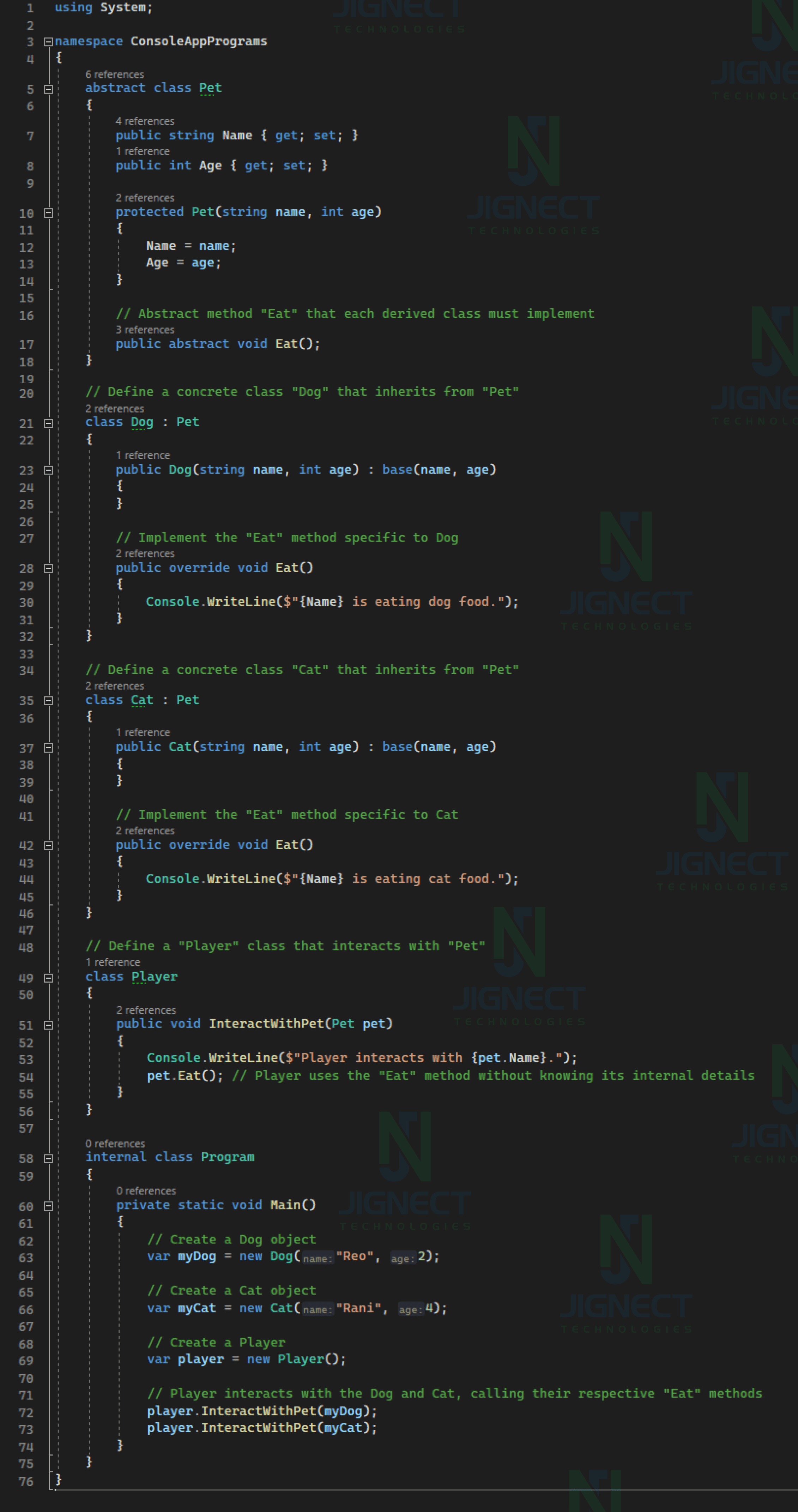
➡️ The Output:
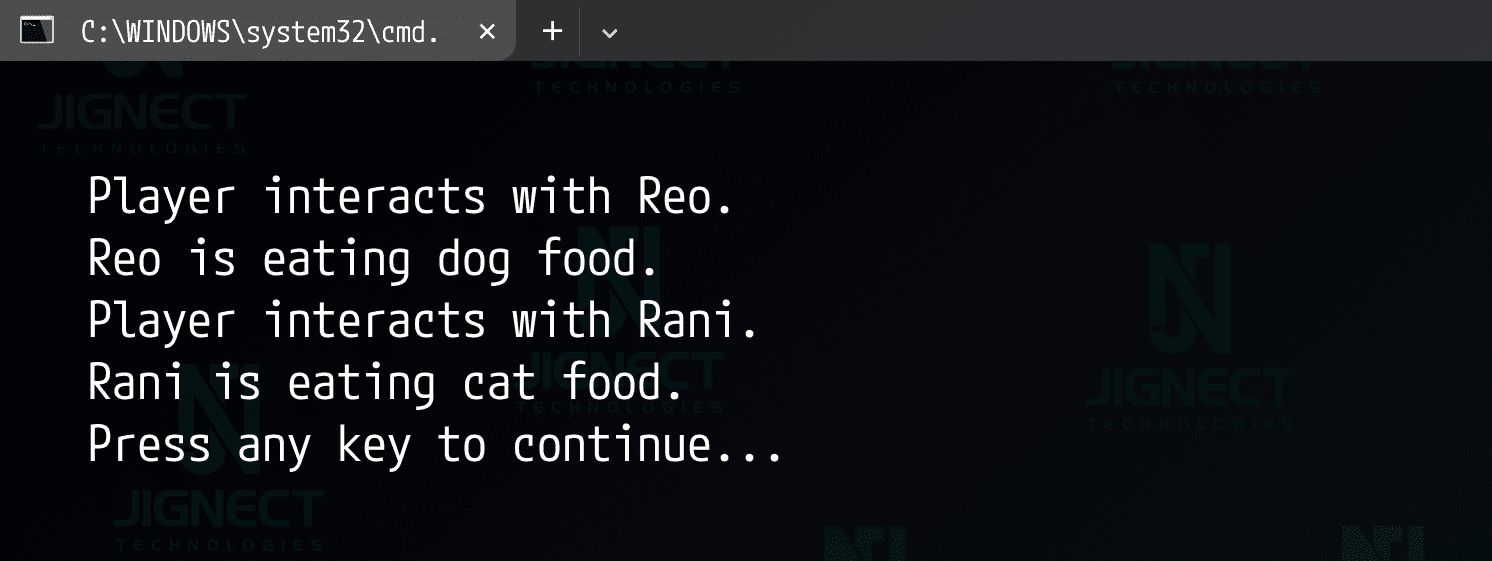
Conclusion:
Object-Oriented Programming (OOP) is like a way to organize your computer programs so that they are:
- Easier to understand (like following a recipe),
- Safer to use (like having a lock on a door),
- More organized (like putting things in labeled boxes), and
- Simple for others to work with (like explaining a game to a friend).
But, like anything, it also has some downsides. Some people say that it can make things too complicated and take up too much space, especially when making really big programs.
Witness how our meticulous approach and cutting-edge solutions elevated quality and performance to new heights. Begin your journey into the world of software testing excellence. To know more refer to Tools & Technologies & QA Services.
If you would like to learn more about the awesome services we provide, be sure to reach out.
Happy Testing 🙂




